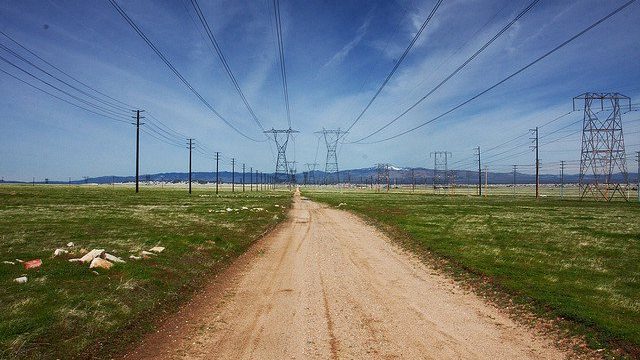Montana Official Says Power Brownouts Are A Concern In Bakken Region

Via Aaron Flint, Montana Public Service Commissioner Travis Kavulla, a Republican, says that government regulations hindering the expansion of power infrastructure could lead to brownouts in the Bakken region. He made the comments to Emilie Boyles for Marks Group Broadcasting based out of Glendive.
Here’s an excerpt, full audio at the link:
Kavulla: Very soon, and even next year. It’s not necessarily even the lack of generation from Basin, because that they’ve been able to build fairly easily-it’s been the lack of transmission lines. So for instance, the US Forest Service at the moment is holding a Basin line from being built across the grasslands in North Dakota. If that line is not in place by 2015 then you may see what we call involuntary loadshedding, brownouts.”
Boyles: Thats a term we hear from California.
Kavulla: That’s right, you’re not used to hearing that now, but compare that 6% annual growth to the rest of the country’s electric growth which is more like a half of a percent or one percent annually. It’s just very hard for utilities to keep up building infrastructure, especially infrastructure that needs easements over federal lands in that kind of environment. And the feds, for what it’s worth, have just not I think realized the gravity of the situation. They certainly will if there starts to be brownouts, especially during winter months.
I believe Kavulla is referring to the battle being fought over transmission lines in the Killdeer Mountain area. Land conservationists oppose the lines, but the energy industry says they’re needed to shore up the shaky power grid in the western part of the state. And there are other environmental implications too. Two gas plants in western North Dakota experienced outages in June and July of last year, causing flaring to spike to the consternation of everyone who doesn’t like to see lots and lots of valuable gas go up in smoke.
“That is very badly needed,” North Dakota Director of the Department of Mineral Resources Lynn Helms said of the power outages at the time, according to Amy Dalyrmple. “The transmission grid is running on maximum. It’s pretty much full all the time. It’s very sensitive to a thunderstorm going through.”
One of Kavulla’s counterparts here in North Dakota expressed similar concerns to me in an interview back in January. His concern, though, was emissions regulations.
Public Service Commissioner Randy Christmann suggested that proposed EPA regulations for power plant emissions are arbitrarily formulated, impossible to comply with and ultimately meaningless in terms of environmental outcomes.
The EPA is “threatening the whole system by requiring carbon capture technology that doesn’t exist,” Christmann told me.
“This is not an attempt to close down power plants,” EPA Region 8 administrator Shaun McGrath said of the regulations at symposium hosted by the North Dakota PSC in January, according to the Bismarck Tribune. “Coal needs to be part of our energy future.”
Christmann isn’t so sure that’s true. Under the proposed EPA rule, new power plants couldn’t emit more than 1,100 pounds of carbon dioxide emissions per megawatt hour of electricity generated. Currently the average for a coal-fired power plant is 2,250 pounds per megawatt hour. Christmann asked McGrath how the EPA came up with that number, and according to the Tribune “McGrath said he didn’t have the specific data on hand but would be able to provide the PSC with that information.”
Christmann suggested that’s because the EPA based the number on politics rather than any scientific findings. “It seems like they’re just picking a number that can’t be met,” he told me.




